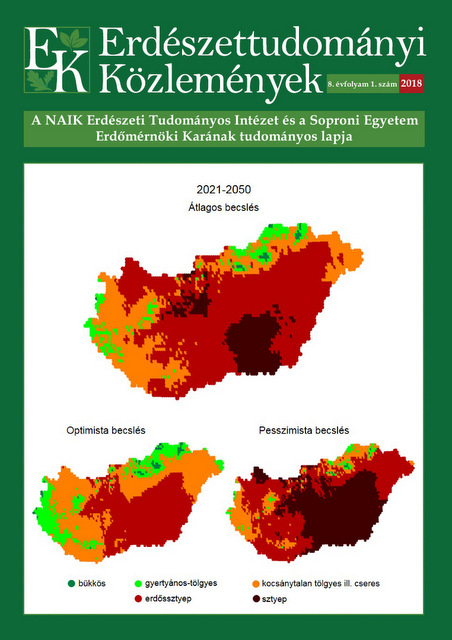Climate-change induced forest decline can further enhance climate change
Zoltán Somogyi
Correspondence
Correspondence: Somogyi Zoltán
Postal address: H-1027 Budapest, Frankel Leó u. 1.
e-mail: somogyiz[at]erti.hu
Abstract
Changes in the forest carbon cycle are among the projected risks of climate change. In this study, these changes were estimated for three important Hungarian tree species for two regional climate change scenarios and three wood harvesting scenarios using the carbon accounting model CASMOFOR. The effects of changing local climate type on species composition and tree growth were studied under ceteris paribus conditions using appropriate site-related forest inventory information. The effect of projected droughts on mortality was modelled using empirical results of a previous study, while conservative assumptions were applied for the effect of climate change on several less important model parameters. Results demonstrate dramatically increasing mortality, considerably changing species composition and significant drop of tree growth as the risk of drought increases. As a combined effect of all these processes, country-level emissions from forests are projected to reach the order of magnitude of the current total economy-wide greenhouse gas emissions by the second half of the century. By providing positive feedback, these emissions can considerably offset mitigation efforts in non-forestry sectors.
Keywords: drought, mortality, tree growth, species composition, carbon cycle, greenhouse gas emissions
Open Acces
For non-commercial purposes, let others distribute and copy the article, and include in a collective work, as long as they cite the author(s) and the journal, and provided they do not alter or modify the article.
Cite this article as:
Somogyi, Z. (2018): Climate-change induced forest decline can further enhance climate change. Bulletin of Forestry Science, 8(1): 211-226. (in Hungarian) DOI: 10.17164/EK.2018.013
Volume 8, Issue 1
Pages: 211-226
First published:
31 May 2018
Related content
14
More articles
by this authors
1
Related content in the Bulletin of Forestry Science*
More articles by this authors in the Bulletin of Forestry Science
* Automatically generated recommendations based on the occurrence of keywords given by authors in the titles and abstracts of other articles. For more detailed search please use the manual search.
